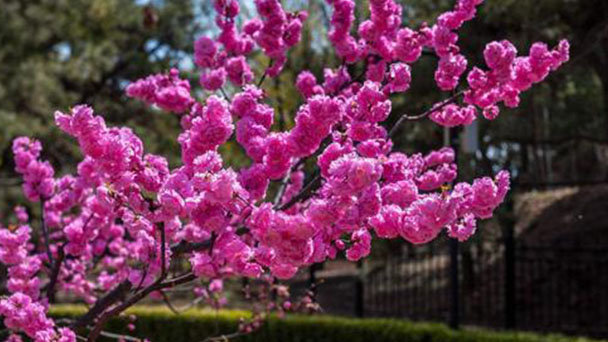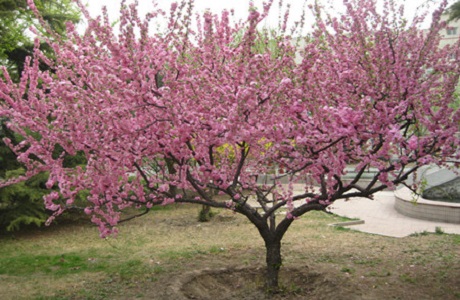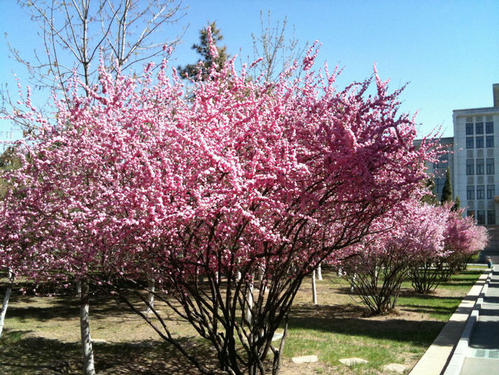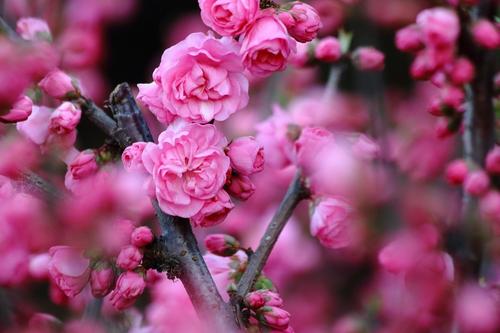How to grow and care for Prunus Triloba
Written by Maggie
Jan 07 2021

Prunus Triloba, with dense foliage and colorful flowers, is an important flowering shrub in spring gardens in northern China. If Prunus triloba is planted in front of evergreen trees or arranged in rocks and hills, good ornamental effects can be obtained. With the edge of warping collocation planting, when in full bloom red and yellow set each other more spring. Below I will make up for everyone by introducing how to grow and care for Prunus Triloba.

How to grow Prunus Triloba
The best growing time: prunus triloba should be planted in spring and autumn.
Best growth soil: not strict requirements on the soil, but not waterlogging resistance, like neutral to slightly alkaline, fertile, loose sandy loam.
Growth humidity requirements: cold, drought resistance, mild alkaline soil can also adapt, not waterlogging resistance. Keep the relative humidity of air at 75 ~ 85 {bf}.
The best growth temperature: Prunus Triloba is light-loving, slightly resistant to shade and cold, and can overwinter at -35℃. The optimum temperature of seeds during the growing period was 20℃ ~ 30℃.
Best growth illuminative: in autumn, winter, spring 3 season can give sufficient sunshine. When putting indoor maintenance, put in a place that has bright light as far as possible, wait for a place such as the sitting room with good daylighting, bedroom, study.

How to care for Prunus Triloba:
First, the application of fertilizer: Prunus Triloba is resistant to impoverishment and does not require a lot of nutrients, so generally there is no need for too much fertilizer. A small amount of NPK fertilizer was applied after graft survival and no fertilizer was applied thereafter. But it must be noted that after fertilization should be watered in time, with appropriate amounts of fertilizer to avoid root damage. When planting, the holes should be covered with sufficient base fertilizer, and topdressing can be applied 1-2 times in May or June to promote plant differentiation of flower buds.
Watering points: Avoids waterlogging, spring planting. If the weather is dry, to water 2 or 3 times, usually do not need to water, at the same time, pay attention to the rainy season drainage. Sufficient water shall be provided to Prunus Triloba in time in summer to prevent plant death due to lack of water. We should pay attention to water three times, that is, the turning green water in early spring, the growth water in mid-spring and the frozen water in early winter.
3. Main points of pruning: during the growth of Prunus triloba, attention should be paid to pruning the branches, thinning the dense branches, weak branches, insect and disease branches, and re-pruning the flourishing long branches and the sparse branches. After the Prunus triloba comes out, the branches shall be pruned moderately short with 3-5 shoots remaining on each healthy branch. After entering the body, prune again once, and press the top to pick the heart, make the nutrient concentration, promote the flower bud germination.
As long as it is maintained properly, Prunus Triloba will grow quickly, and when it reaches a certain size, consideration should be given to replacing it with a larger one so that it can continue to flourish. One of the following may be used for the culture soil and composition of the pot: garden soil: slag = 3:1; Or garden soil: medium coarse river sand: sawdust (shavings) = 4:1:2; Or paddy soil, pond mud, one of the leaf rot soil.
If Prunus Triloba is planted around evergreen trees or in rockery, its visual effect will be more ideal, which can make it have good visual effect. Plants with other flowers and colors, in the spring and autumn flowers in full bloom, flower shape, colors are very beautiful, colorful flowers compete with each other, the scenery is pleasant, and are rare botanical garden plants.
The seeds of Prunus triloba can also be used to treat intestinal qi stagnation, bowel dryness and constipation, edema and abdominal fullness, beriberi, urine and other adverse effects.

Latest Updated
- Benefits of Bugleweed - 7 Science-backed Health Benefits
- Bugleweed Dangers & Side Effects - Is It Poisonous?
- How to Plant Evergreen Trees - What You Should Know
- When to Plant Evergreens - Grow Guide for Evergreen Trees
- 12 Wonderful Evergreen Shrubs for Your Garden
- 12 Popular Evergreen Plants with Pictures for Beginners
- When And How To Prune A Lilac Bush Like a Pro
- How to Grow & Care for Lilac Vine (Hardenbergia Violacea)
- Japanese Lilac Tree (Syringa Reticulata) Care & Propagation Guide
- Shumard Oak Pros and Cons - What to Know
Popular Articles
- Winter maintenance of Antirrhinum Majus
- How to Grow Terminalia Mantaly Tree
- How to Grow and Care for Crossostephium Chinense
- How to grow Antirrhinum Majus in spring
- Peristeria Elata (Dove Orchid) Profile: Info & Care Guide
- Underwatered Snake Plant (Sansevieria Trifasciata) - Signs And How To Fix
- How to Care for Brazilian Jasmine Plant (Mandevilla Sanderi)
- How to Grow & Care for Graptopetalum Purple Delight in Summer
- Rosa Chinensis (China Rose): Plant Growing & Care Tips
- How to Care for Baby Sun Rose (Aptenia Cordifolia)